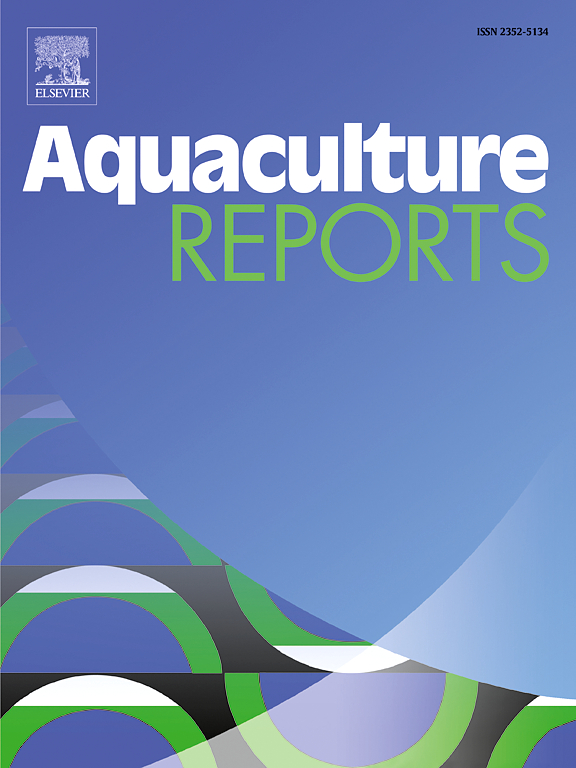Proteomic analysis to explore potential mechanism underlying pseudomale sperm defect in Cynoglossus semilaevis
IF 3.2
2区 农林科学
Q1 FISHERIES
引用次数: 0
Abstract
Females of Chinese tongue sole (Cynoglossus semilaevis) grow 2–4 times faster and bigger than males, but some genetic females can sex reverse into phenotypic males (called pseudomales, ZW karyotype) that presents similar slow growth to normal males. Pseudomales could only produce Z-type sperm, of which the inheritance epigenetic pattern makes their offspring tend to be pseudomales. In this study, to explore the potential mechanism underlying sperm defect (W sperm absence) of pseudomales, we compared the proteomic profiles of pseudomale and male semen samples. Totally, 783 differentially expressed proteins (DEPs) including 495 up-regulated and 288 down-regulated proteins were identified in pseudomale group. Proteins involved with proteasome were enriched by GO and KEGG analyses. A protein-protein interaction (PPI) network was further constructed to understand the relationship of the DEPs. Interestingly, ten molecular chaperones including four heat shock proteins (Hsp90aa1.2, Hsp90ab1, Hsp90b1, and Hsc71/Hspa8) and six chaperonin containing T-complex protein 1 (TCP1) subunits (Cct1, Cct2, Cct3, Cct4, Cct5, and Cct7) were identified, and they were up-regulated in pseudomale. Ubiquitin-related proteins including ubiquitin like 4 A (Ubl4a) and NEDD8 ubiquitin like modifier (NEDD8), proteasome subunits such as proteasome 26S subunit, non-ATPase 14 (Psmd14) and proteasome 26S subunit, ATPase 6 (Psmc6), and redox-related proteins like thioredoxin-disulfide reductase (Txnrd3) and thioredoxin (Trx1) were also found in PPI network. In addition, up-regulation of lysophosphatidylcholine acyltransferase 3 (Lpcat3), acyl-coenzyme A (CoA) synthetase long-chain family members (Acsl1a and Acsl6), glutathione synthetase (GSS), and transferrin receptor 1 (Trf1) but down-regulation of ferritin were observed in pseudomale. Dysfunction of chaperones targeting client polypeptides for degradation via the ubiquitin-proteasome system (UPS) or ferroptosis might be a possible cause of pseudomale sperm abnormalities. The study provides a fundamental basis for explaining W sperm absence, which may have vast application in the future fish breeding with high-female-ratio.
求助全文
约1分钟内获得全文
求助全文
来源期刊

Aquaculture Reports
Agricultural and Biological Sciences-Animal Science and Zoology
CiteScore
5.90
自引率
8.10%
发文量
469
审稿时长
77 days
期刊介绍:
Aquaculture Reports will publish original research papers and reviews documenting outstanding science with a regional context and focus, answering the need for high quality information on novel species, systems and regions in emerging areas of aquaculture research and development, such as integrated multi-trophic aquaculture, urban aquaculture, ornamental, unfed aquaculture, offshore aquaculture and others. Papers having industry research as priority and encompassing product development research or current industry practice are encouraged.
 求助内容:
求助内容: 应助结果提醒方式:
应助结果提醒方式:


